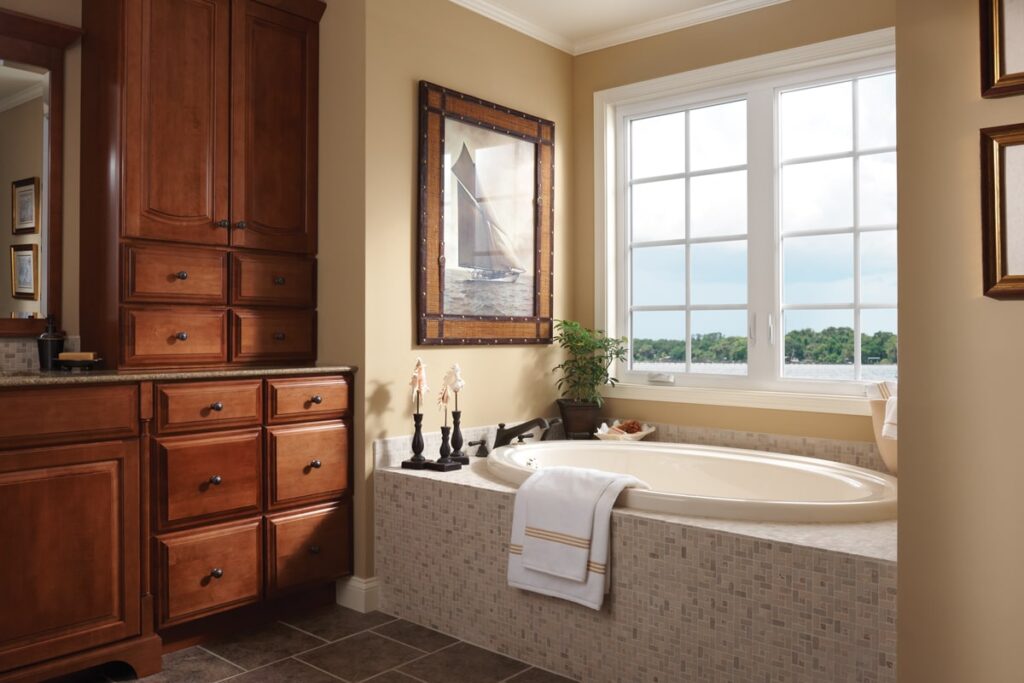
Counting the Savings with Energy Star Products
Energy Star window isn’t a synonym for energy-efficient window, but savvy consumers recognize that the definitions are fairly close. An Energy Star window is a window that meets the criteria set out by the Environmental Protection Agency. The EPA designed the Energy Star Program and its user-friendly labels to help consumers find reliable, energy-efficient products. According to EnergyStar.gov, the Energy Star program has helped Americans save over $500 billion in energy costs.
Defining Energy Star Windows
What are Energy Star windows? They’re windows that meet the criteria to be included in the Energy Star Program. As Modernize explains, three different organizations are involved in ensuring that windows meet these standards:
- Manufacturer: An Energy Star partner must be the window’s maker.
- National Fenestration Rating Council: The NFRC will independently test, certify, and verify the window for several vital performance measurements.
- EPA: The EPA’s guidelines are consulted. Windows must meet these standards before they can be sold as Energy Star windows.
Recognizing Energy Star Windows
How can you recognize Energy Star windows? There’s an easy-to-spot label. It features a blue square with white writing. Below an arch, “energy” in cursive leads directly to a star. Below the square, a matching blue rectangle frames the printed words “ENERGY STAR” in white. While the distinctive logo catches the eye, many would say that it’s not the most important part of the label. That’s because there’s a lot of useful information about the window printed in a user-friendly format that makes it easy for consumers to vet windows, compare products, and decide which window is the best fit for their needs. As This Old House indicates, Energy Star labels contain the following:
- Ratings by region: Climates vary widely across the U.S., so different windows will perform better in different places. A map with shadings to indicate where a window will do best appears on the label.
- U-factor: This measures the rate of heat transfer, which shows how well the window insulates. The expected range is from 0.25 to 1.25. Lower is better.
- Solar heat gain coefficient: SHGC reveals how well the window blocks heat from the sun. It’s measured from 0 to 1. A higher score means more heat seeps through.
- Air leakage: AL measures how much air travels through the window. A lower value equals less leakage.
- Visible transmittance: VT rates the amount of natural light that a window permits to pass. It’s measured on a scale of 0 to 1. A higher score means more light comes in.
- Condensation resistance: CR rates the window’s ability to resist moisture buildup. It’s measured on a scale of 0 to 100. Windows with a score below 50 are best shunned.
Enjoying the Benefits of Energy Star Windows
If your windows are old, ill-fitted, worn out, or no longer functioning smoothly, you may be pondering replacement windows. High energy bills are another common reason that people start thinking about upgrading their windows. Selecting Energy Star windows offers several benefits:
- Save money on energy
- Enjoy greater comfort
- Reduce condensation
- Protect furnishings from fading
- Improves home value
When you want to improve your home, installing Energy Star windows is a great choice. With our huge selection of quality windows, American Window Company can help you find the perfect windows for your project. We’re your source for the brands that you want at affordable prices and top-notch customer service from experts who truly know their field. We can assist you with selection, measuring, and installation or provide the windows that you need for your contractor. Reach out to American Window Company today to discuss your project.



